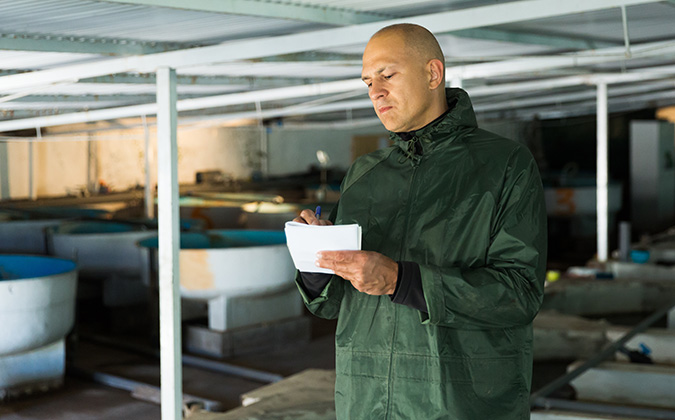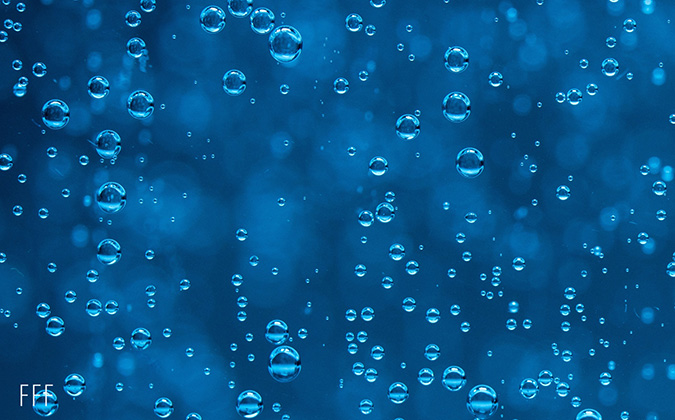
Managing health issues in the fast-changing aquaculture industry
An interview with Stian Johnsen, project manager for the World Organisation for Animal Health
Q: There’s a lot of talk about the sustainable intensification of aquaculture. How does the threat of disease affect the industry’s ambitious plans?
SJ: I would say that diseases are by far the most limiting factor. We have problems now, and there will be increasing problems because of increased production, new species in aquaculture and aquaculture in new places. The effect of climate change is expected to increase disease challenges. We have migrating species, diseases popping up in places we never had them before, so it’s a matter of being prepared. The World Organisation for Animal Health (WOAH) launched the Aquatic Animal Health Strategy in 2021 to provide better support for our members in preventing, early detection and control of diseases.
Q: What do you see as the priority in managing fish disease globally?
SJ: Biosecurity should be the main priority, as prevention is always better than cure. You have to put in place measures in your farm to reduce the risk of introducing pathogens, e.g., controlling the water source, the health status of the animals entering, equipment, vehicles and vessels, feed and vectors. WOAH’s standards, which are recognized by the World Trade Organization as the aquatic animal-health standards for trade, are providing recommendations on how to prevent, early detect and control disease.
Q: Has WOAH’s approach in this respect changed over the years?
SJ: Our work in the past, both in terrestrial and aquatic animals, has focused much on trade, but in the last 10 years we have taken some steps back to focus on the basic things you need to have in place, because being able to trade is the end product of all the efforts made.
An important addition to the Aquatic Code was the adoption of a new biosecurity chapter in 2020. The next steps would be to ensure sufficient surveillance to prove the health status of fish, and we’re also working on two new chapters on emergency preparedness and response now. It’s about getting the basics right, because we realize that the majority of countries are struggling.
Q: How easy is it to encourage the necessary investment in biosecurity measures?
SJ: Given financial pressures, there’s always a tendency for farmers to think about tomorrow and not what’s going to happen in 10 years’ time. One of the issues is we haven’t really had the data to tell them okay, if you invest in biosecurity over 10 years, this will be your mortality, or the number of disease outbreaks.
That’s actually also something we are working on. We have a program called the Global Burden of Animal Diseases to try to quantify the losses caused by disease and using the data to demonstrate to countries the benefits of investing in biosecurity.
Q: And in terms of surveillance, what are the barriers that can prevent farmers from staying on top of the disease threats that might be circulating on their sites?
SJ: Surveillance is key to prove health status and to react quickly in case of disease. The authorities need to have the knowledge, staff, resources and the diagnostic capacity to take samples and test for disease to support farmers in surveilling the health of their animals. Farmers also need to be trained in recognizing disease.
There are also some key barriers to be shared among our members. This was illustrated last year, when we carried out a big survey, and the same problems with implementing our standards came up again and again: lack of legislation and regulations, resources, staffing, training.
Trade is a driver for surveillance as you need to document the health of the animals and products to your trading partners to be allowed access. Large parts of the aquaculture industry are small-scale framers that do not trade internationally, but surveillance and knowledge about disease are as important to them to avoid introduction and spread of diseases into and out of their farms. WOAH is working hard to find ways of supporting these small-scale farmers as they have less resources than bigger producers.
Q: WOAH provides a service for its member where a whole country’s animal-health system is assessed. Can you explain how that works?
SJ: Yes, it’s called the Performance Veterinary Services (PVS) Pathway that contains a whole set of steps to support member countries. The first step is the PVS aquatic evaluation. This delivers a qualitative assessment of the performance of a country’s aquatic animal-health services and their compliance with our international standards. A country can send a request to WOAH to send a team of external experts to evaluate the implementation of standards by the country’s aquatic animal-health services.
The team uses the PVS Tool-Aquatic for its evaluation of the public and private implementation of the standards. The tool contains 47 critical competencies, and the country will get a score on each of them indicating the strengths and areas of improvements. The results will be used by the country to prioritize efforts. This report is confidential, but countries can decide to share it openly if they consider it beneficial. WOAH also offers more detailed follow-up support on specific topics.
The PVS Pathway has been actively used by countries on terrestrial animals, but there has been limited request on the aquatic animal side. There has been an increase in the number of aquatic PVS evaluations the last few years, and we work closely with our members to get them to see the benefits. As the number of evaluations increases, WOAH needs to work hard to develop the tools in the rest of the PVS Pathway to be able to provide more targeted support.
Q: How do you make sure efforts to support your standards are disseminated worldwide?
SJ: We have offices in each region, and our goal is to strengthen their competence and staffing on aquatic animals. This is important as they are closest to the end users, our members. We are developing a common approach on how the region should build collaboration networks as part of the Aquatic Animal Health Strategy. Our Asia-Pacific region is currently our leading star and is inspiring the other regions. This region has programs on biosecurity in small-scale production, emergency preparedness and response, antimicrobial resistance (AMR) and diagnostics.
WOAH activities and standards are science based, and we have a global scientific network consisting of reference laboratories on listed diseases and collaborating centers that provide support on epidemiology, emerging diseases, AMR and economics of diseases. The distribution of reference laboratories is unevenly distributed, with Africa currently having none. We’re currently evaluating the scientific support structure to find ways to provide diagnostic support for all countries.
Q: Tell us about WOAH’s system for notification of diseases.
SJ: If you have an outbreak of a listed disease or an emerging disease, you’re obliged to notify within 24 hours through our system, called WAHIS. Unfortunately, like in all systems, what you get out depends on what you get in, and the notification performance has not been fantastic in aquatics. Early warning to your neighbors of outbreaks is crucial for reducing spread.
There might be several reasons for that: If you don’t have a list of notifiable diseases in your country or have limited diagnostic capacity, it’s not possible for you to notify anything to WOAH. Another issue is, you may be “punished” if you’re a good guy, because your markets could close if you notify. Even though those countries that block you might have the same disease, they choose not to find it, or they haven’t notified it.
Q: And what are the criteria for a disease being listed as notifiable?
SJ: Once an emerging disease has been found by the WOAH Aquatic Animals Commission to meet the definition of an emerging disease, members are informed that they must immediately notify any outbreak to WOAH. The commission will then continuously seek more scientific information and map experiences from members to assess whether the disease meets the criteria for listing in the Aquatic Code.
The criteria requires that we can demonstrate that international spread must be likely, it must be possible to demonstrate freedom from the disease, a precise case definition must be available, and a reliable means of detection and diagnosis needs to exist. In addition, natural transmission or significant consequences on the health of farmed animals or severe consequences on wild species must be proven. An example of an emerging disease that was listed recently is tilapia lake virus. This disease initially met all the criteria, but no validated diagnostic tests were available. WOAH established an ad hoc group consisting of laboratories around the world with experience in the disease to develop validated methods.
Q: Are there any areas where there needs to be greater focus in current thinking around health issues in aquaculture?
SJ: As we work to follow the “One Health” approach to both terrestrial and aquatic food production, where human, animal and ecosystem health are all linked, we have to be aware that changes to the climate are going to affect a lot of what we do. I think a focus on climate change preparedness should be a focus for everyone. It will need to be a joint venture. We will need to work with our partners, including the Food and Agriculture Organization, because the effects are already happening.
Posted on: March 21, 2023






